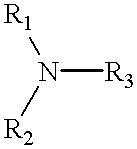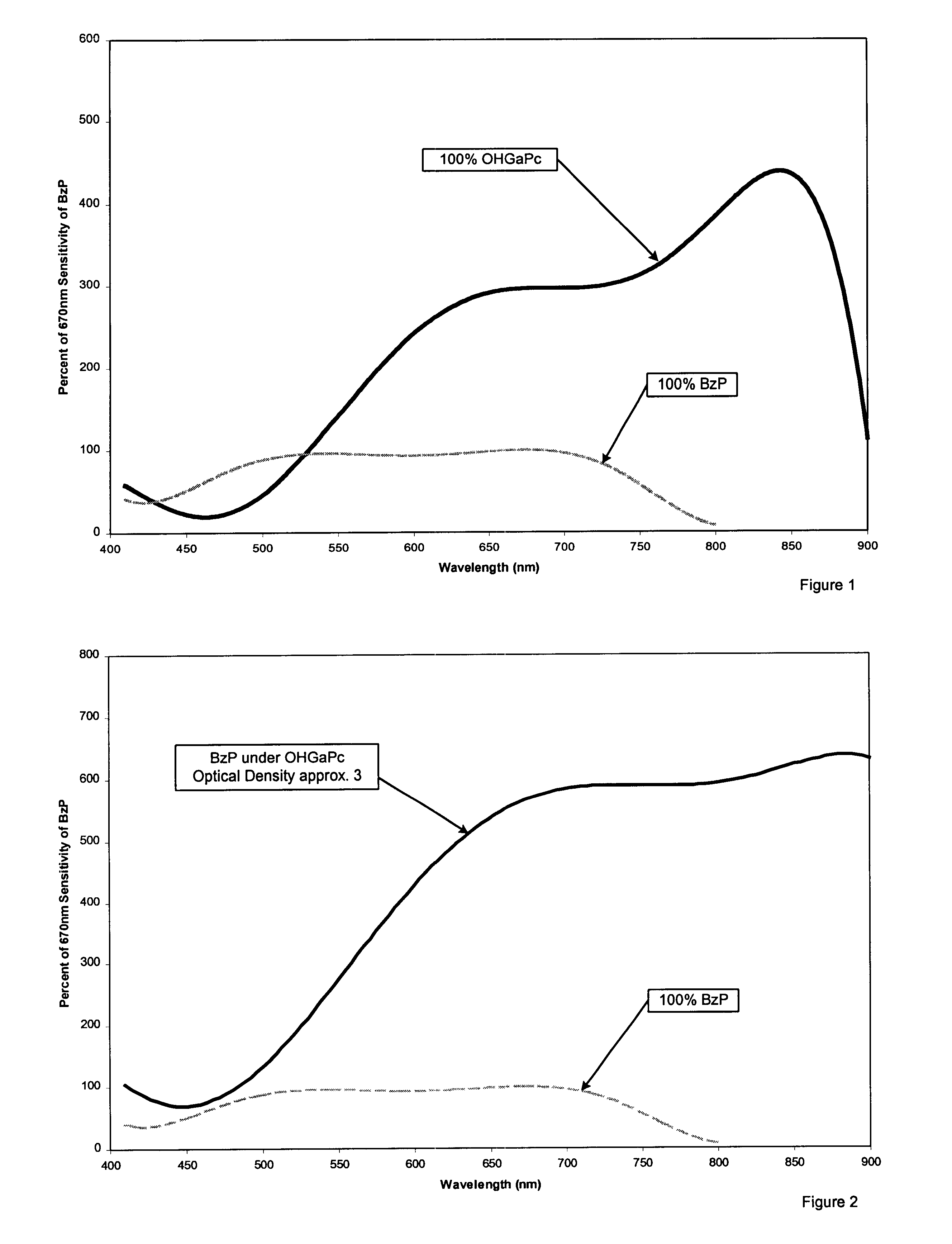Photoreceptor with layered charge generation section
a photoreceptor and charge generation technology, applied in the field of photoreceptors, can solve the problems of inability to meet the needs of the user, and increase the cost of manufacturing photoreceptors, so as to achieve stable pigment dispersions, high-quality photoconductive coatings, and maximize sensitivity
- Summary
- Abstract
- Description
- Claims
- Application Information
AI Technical Summary
Benefits of technology
Problems solved by technology
Method used
Image
Examples
example i
A BZP charge generation section dispersion is prepared by introducing 0.45 grams of Iupilon200 (PCZ-200) available from Mitsubishi Gas Chemical Corp. and 50 ml of tetrahydrofuran into a 4 oz. glass bottle. To this solution is added 2.4 grams of BZP and 300 grams of 1 / 8 inch (3.2 millimeter) diameter stainless steel shot. This mixture is then placed on a ball mill for 72 to 96 hours. Subsequently, 2.25 grams of PCZ-200 is dissolved in 46.1 grams of tetrahydrofuran and then added to the BZP slurry. This slurry is then placed on a shaker for 10 minutes.
A HoGaPC charge generation section dispersion is prepared by introducing 0.45 grams of Iupilon200 (PCZ-200) available from Mitsubishi Gas Chemical Corp. and 50 ml of tetrahydrofuran into a 4 oz. glass bottle. To this solution is added 2.4 grams of HoGaPC and 300 grams of 1 / 8 inch (3.2 millimeter) diameter stainless steel shot. This mixture is then placed on a ball mill for 20 to 24 hours. Subsequently, 2.25 grams of PCZ-200 is dissolved ...
example ii
An electrophotographic imaging member is prepared identical to Example I, except the charge generation section dispersions are diluted by adding additional solvent to the charge generation section dispersions. The total optical density is 1.5. The sensitivity was normalized as in Example I and plotted in FIG. 3.
PUM
 Login to View More
Login to View More Abstract
Description
Claims
Application Information
 Login to View More
Login to View More - R&D
- Intellectual Property
- Life Sciences
- Materials
- Tech Scout
- Unparalleled Data Quality
- Higher Quality Content
- 60% Fewer Hallucinations
Browse by: Latest US Patents, China's latest patents, Technical Efficacy Thesaurus, Application Domain, Technology Topic, Popular Technical Reports.
© 2025 PatSnap. All rights reserved.Legal|Privacy policy|Modern Slavery Act Transparency Statement|Sitemap|About US| Contact US: help@patsnap.com



